Even if you’ve never been to Japan, I’d venture to guess that you’ve seen pictures of the vermilion gate of Itsukushima-Jinja seemingly floating on the glittering waters of Hiroshima Bay. The torii seems to have become synonymous both with the elegance of Japanese Architecture and the serenity of the country’s Shinto Shrines.
Apart from being designated a UNESCO World Heritage Site and a National Treasure of Japan, this is also one of the famous “Three Views of Japan”, scenic vistas compiled by 17th century scholar Hayashi Gahō.
With so many accolades, I don’t think I have to explain why I think that Itsukushima-Jinja should be on the itinerary of every visitor to Japan. Read on for everything you need to know about exploring this unique sight.
This post may contain affiliate links, and I might earn a small commission at no additional cost to you. For more info, click here.
The Historical Significance of Itsukushima Shrine
While it’s believed that the island has been home to Shinto Shrines since at least the 6th century, the current layout of the shrine dates to 1168 (although destructions through several typhoons led to many of its buildings being reconstructed over the centuries).
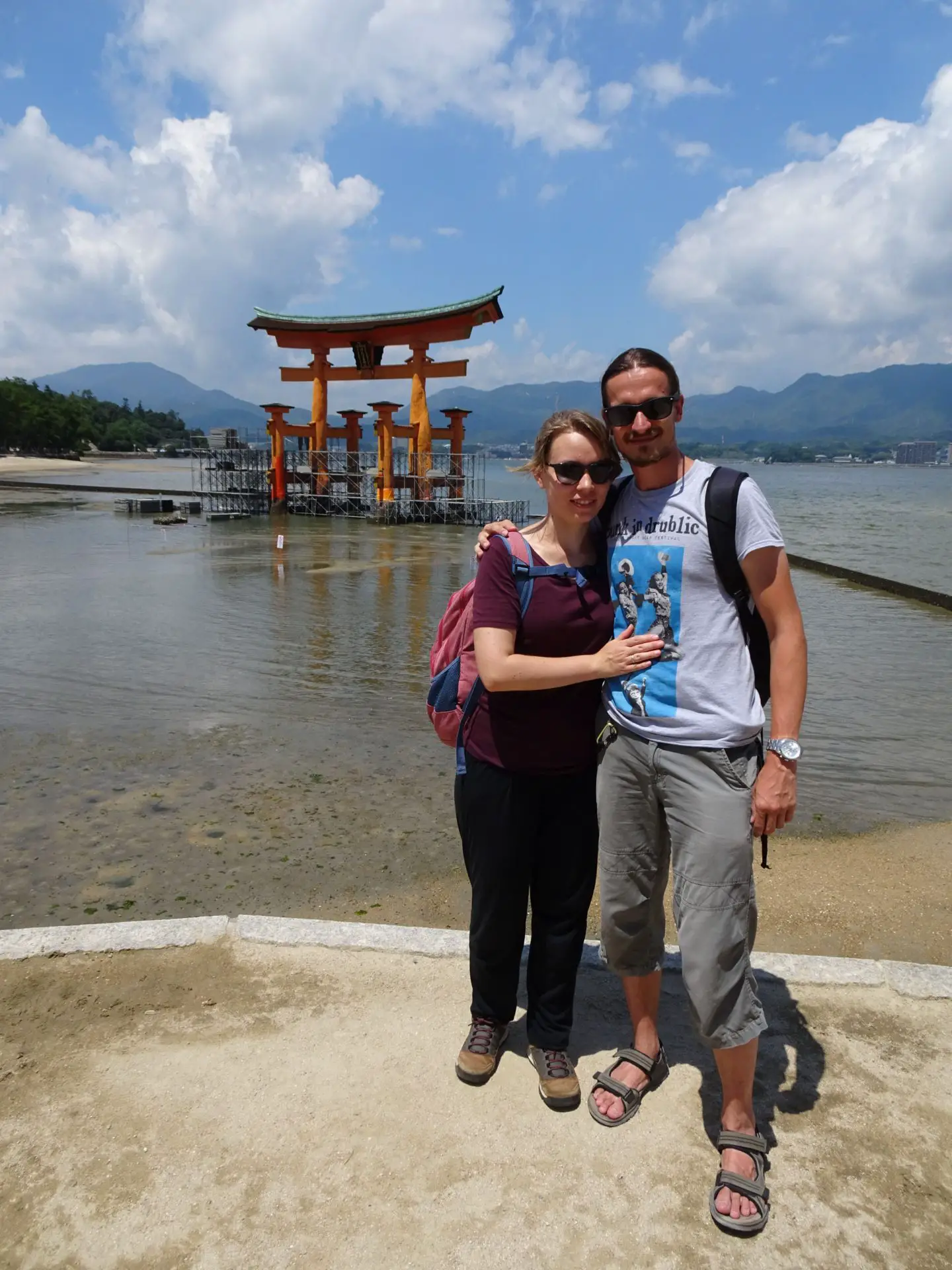
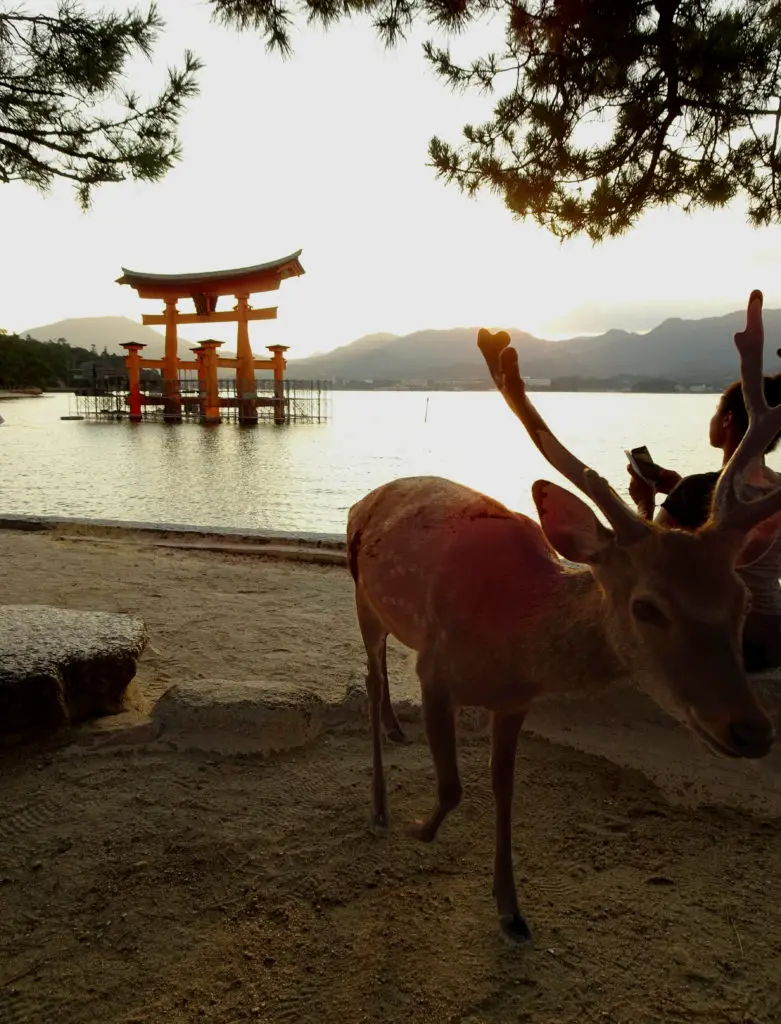
As a matter of fact, the gateway you see today only dates to 1875, but efforts have been made to preserve the original 12th century architectural style. As the entire island was worshipped as a divine site, for centuries no commoner was allowed to set foot on it. This is also the reason for the seaside location of the shrine, which is erected on stilts over the water.
What to See at Itsukushima Shrine
The Torii
Itsukushima Shrine’s most famous feature can be seen from all around the little bay and you wouldn’t even have to pay an entrance fee to see it. That said, I found the other areas of the shrine worth checking out as well, plus a lot of the architectural features make for nice frames while snapping pictures of the torii.
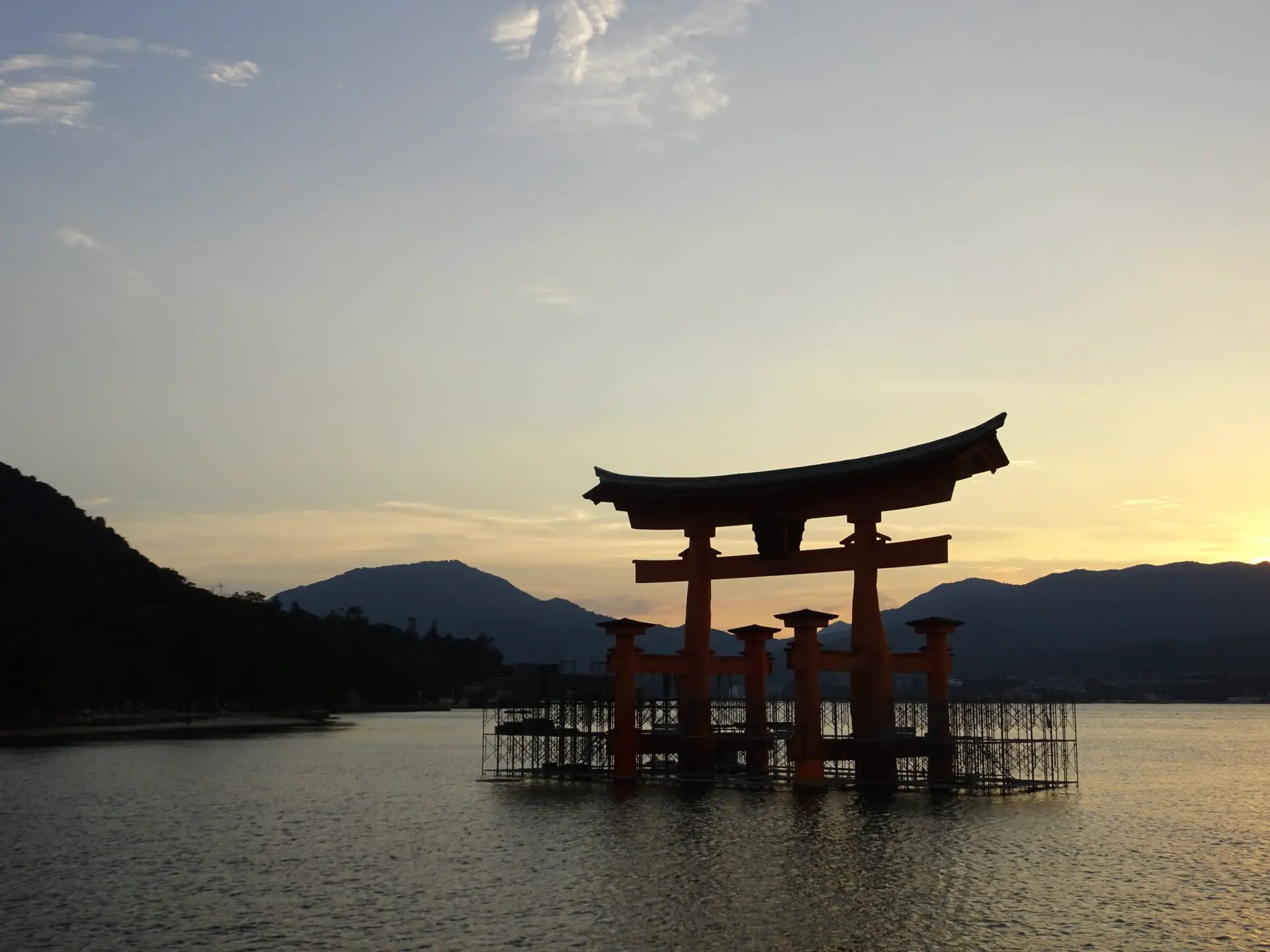
During low tide you can walk out to the gate, while during high tide its features are picturesquely reflected by the usually calm sea. Therefore, if you have enough time to spend on the island it pays to drop by during high as well as low tide, to catch the best of both worlds.
The Shrine Buildings
You’ll enter the complex from the north, where the first shrine you’ll pass is Marodo-jinja or the “shrine for guest deities”, which is the biggest of the auxiliary shrines in the complex. The haraiden (purification hall) of this area is different from the others as the surrounding parapet opens to the sea in the front.
Continue along the walkway, where several fantastic views of other portions of the shrine as well as the torii open up – this is a heaven for photographers, especially at high tide, when all of the features are reflected in the waters.
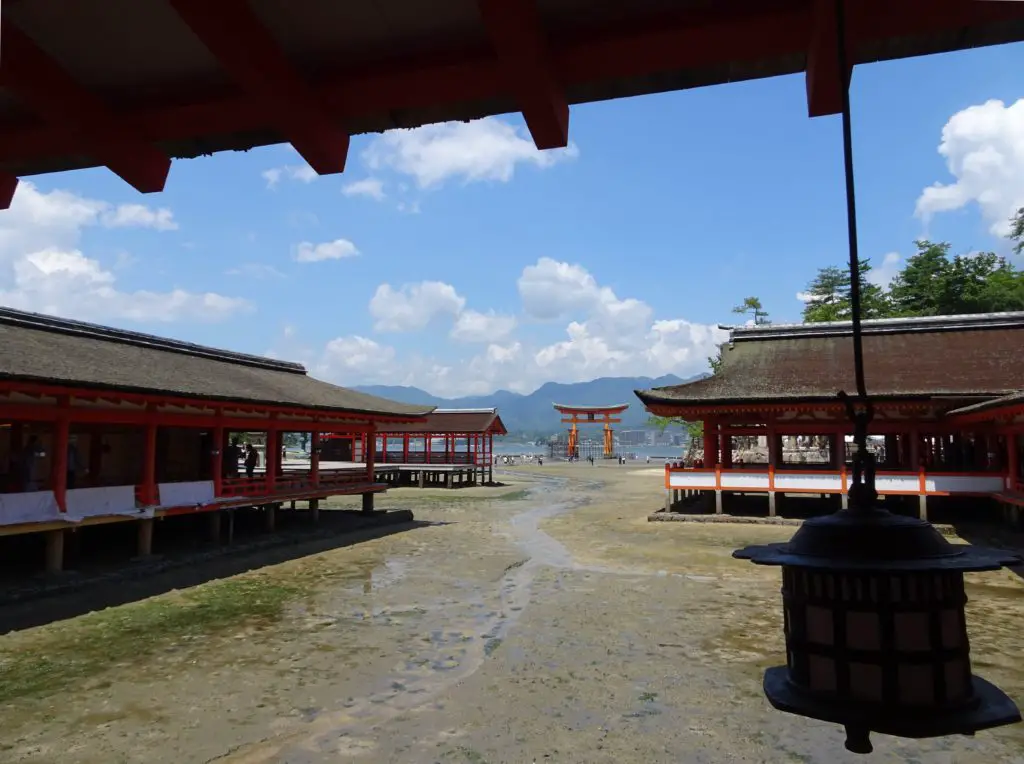
The main shrine building in the centre of the complex is dedicated to the female deities of the sea, transport, fortune and the arts. It consists of the haiden (worship hall) in the front and the honden in the back, which is the holiest building and the true centre of the shrine. The square area to the north-west of the haiden is the Takabutai, an elevated stage used for court dances. The small buildings on both sides are the chambers for the musicians accompanying the dance.
Continue along the walkway to find the small Daikoku Shrine south of the main honden, used for worshipping Daikoku, the deity of match-making. The Tenjin Shrine directly to the west is dedicated to Sugawara no Michizane, a scholar and poet of the Heian Period (794-1185).
If you continue south-west along the main walkway, you’ll notice a Noh Stage, in which theatre performances were given as homage to the gods by re-enacting several key events in Shinto myth. To the south, you’ll find the pretty arched Sori-Bashi Bridge, presumably dating to the 12th century.
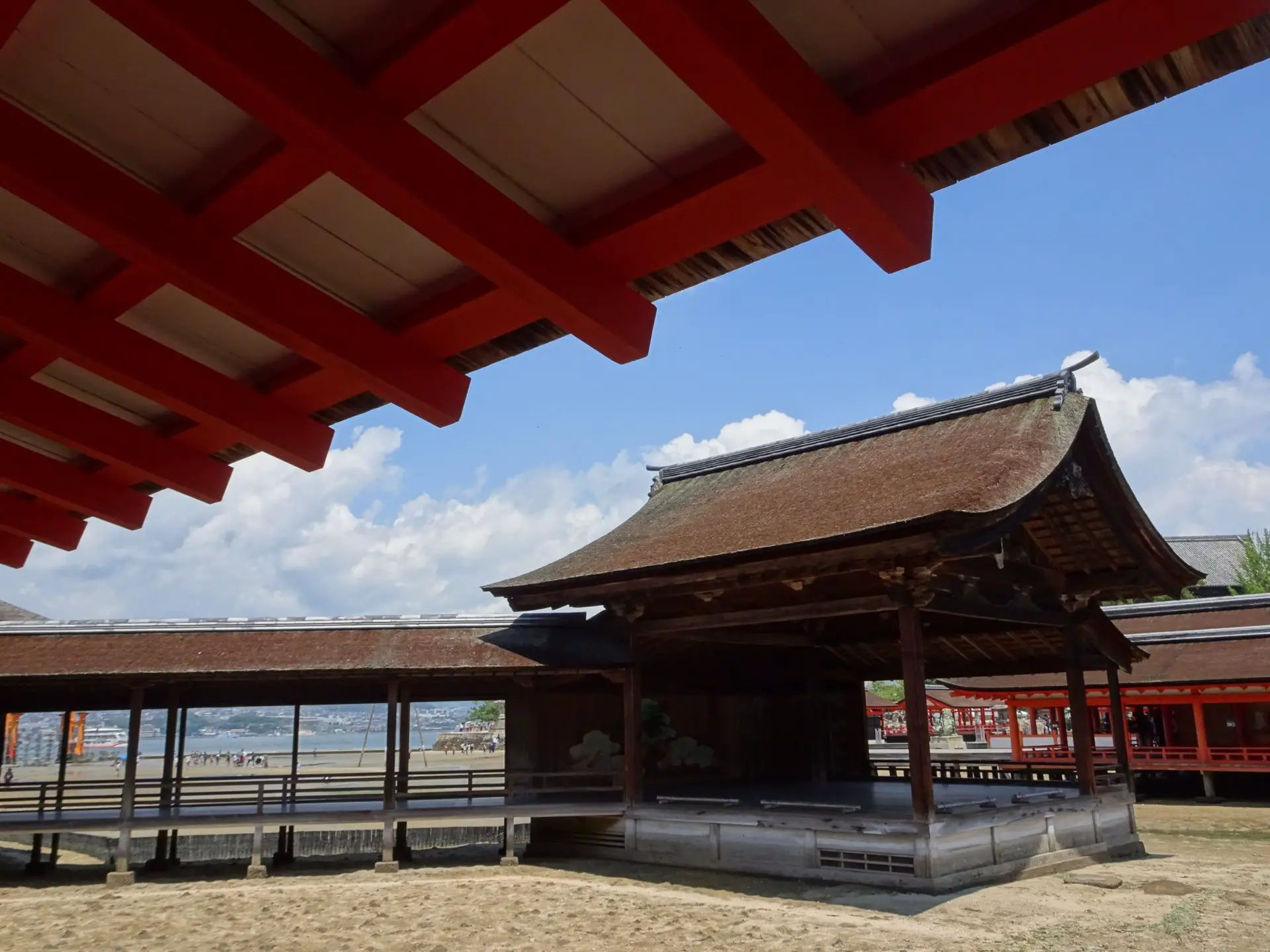
The Treasure Hall
Directly opposite the exit of the complex, you’ll find the shrine’s Treasure Hall, containing tons of precious objects connected to the shrine, including some beautiful painted scrolls donated to the shrine by the ill-fated Heike Clan.
There are also impressive pieces of samurai armor and swords as well as some wooden masks which were used for bugaku, the court dances enacted on the stage in front of the mains shrine. Notice the giant sliced tree trunk in front of the museum, which used to hold a pillar for the torii until its reconstruction in 1875.
How Much is the Entrance Fee?
A combination ticket allowing for entrance to both the shrine and the treasure house is 500¥, while separate tickets for both sites are 300¥.
When to visit Itsukushima Shrine
The opening times of the shrine vary by season – you can check them on Miyajima’s Tourism Website.
If you only have a short time on the island, you might also want to consult the tide tables, as the classic appearance of the torii being reflected by the sea only happens at high tide.
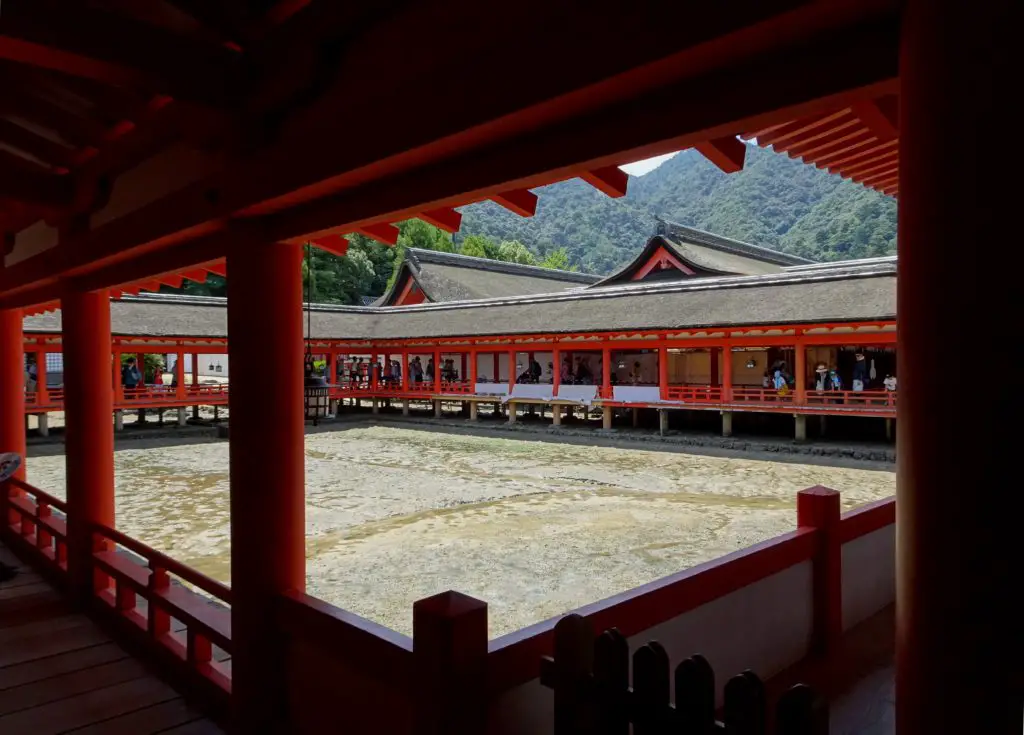
Other Things to See on Miyajima Island
Besides Itskukushima Shrine, Miyajima Island has tons of other historical sites worth visiting. Apart from that, the beautiful Mount Misen offers fantastic views all around and is a great destination for a hike. Check out my guide to the rest of Miyajima Island here!
Guided Tours of Miyashima Island
If you prefer a hassle-free visit with a knowledgeable guide, several providers offer Walking Tours or Riksha Tours of the island.
Have a look at the experiences below to see if one strikes your fancy:
How to Get to Itsukushima Shrine
The only way to reach the island is by ferry from the mainland. The cheaper option is to take the train along JR Sanyo Line to Miyajimaguchi Station (about 30 minutes/420¥ from Hiroshima Station), then walk down the big road south-east of the station for 5 minutes to the pier.
Ferries go every 15 minutes between 8AM and 7PM, and a little less frequently in the hours before/after. You can check the entire schedule here. The trip takes only about 10 minutes and affords nice views of the torii. The return trip is 360¥.
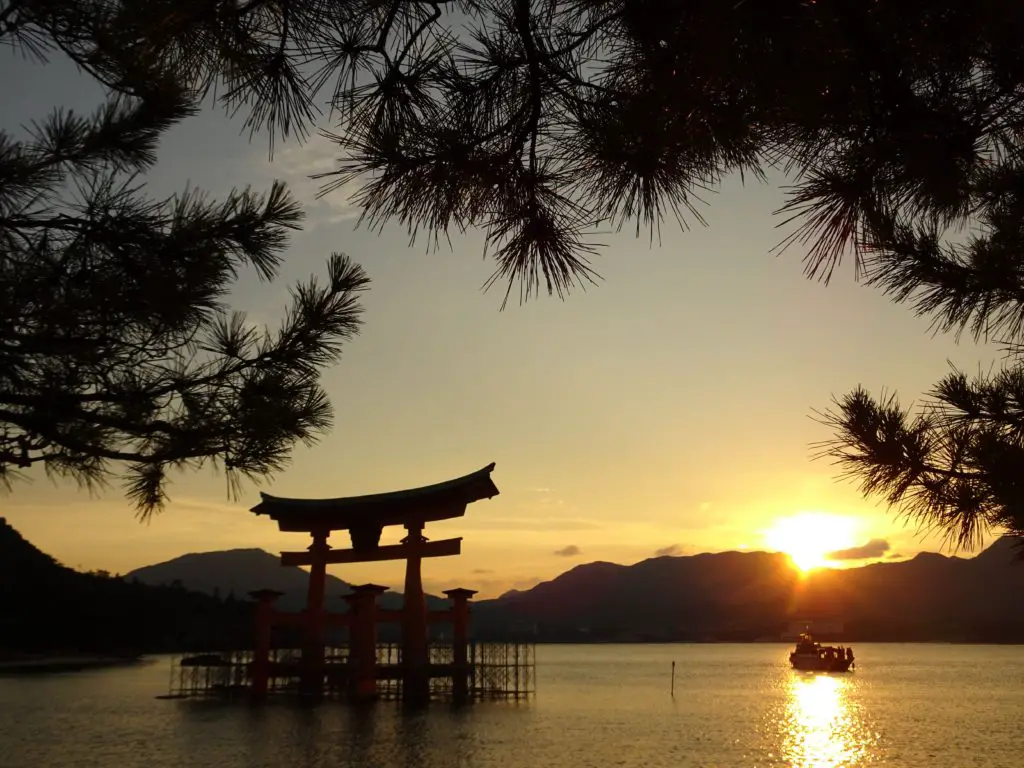
The faster, albeit more expensive, option would be taking the high-speed ferry from Hiroshima Ujina Port, which takes about 30 minutes and costs 1,900¥. The schedule can be found here.
Once you’ve arrived on Miyajima Island, turn right at the ferry terminal and follow the coastal road for about 10 minutes until you reach the shrine.
Where to Stay Near Itsukushima Shrine
We stayed at Bar & Hotel Colors Miyajima, which is located on the mainland close to the ferry pier for the island.
Miyashima Island itself also has a few accommodation options, most of them in the mid-range segment, although the occasional budget deal can be found, like Miyajima Guest House Mikuniya. Have a look at this map to find a place that suits you.
Where to Eat Near Itsukushima Shrine
There’s no shortage of restaurants serving tasty local fare around Miyajima Village. We ate at Tori-I, which had good, affordable seafood despite its prime location in the most touristy area of the island. It also seemed to be massively popular with domestic visitors, which is always a good sign. If you go there, try their fantastic grilled oysters.
If sea-food isn’t your cup of tea, there are plenty of other restaurants in the surrounding area.
See Also
The best things to see and do on Miyajima Island, Japan
The best things to do in Okayama, capital of Japan’s “Land of Sunshine”